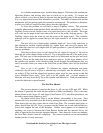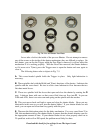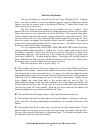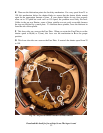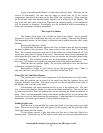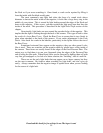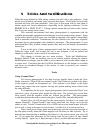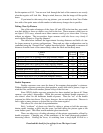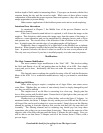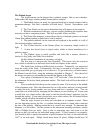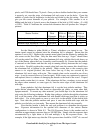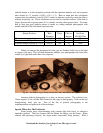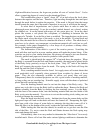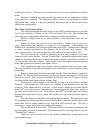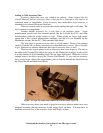
Download this book for free at http://www.TheArgusA.com/
57
Set the aperture at f/4.5. You can now look through the back of the camera to see exactly
what the negative will look like. Keep in mind, however, that the image will be upside-
down.
If you intend to take many close up pictures, you can mark the front View Finder
lens with a fine-point water-soluble marker to indicate any changes due to parallax.
Taking Close-Up Pictures
One of the main advantages of the Argus AF and A2F at the time they were made
was their ability to focus on objects very close to the lens. These cameras could focus on
an object 1.25 ft away, whereas most other cameras could go no closer than 3 ft away
without an adapter. The two-position Argus cameras could also focus very closely if
used with the Portrait or Copying Adapters.
The table below indicates the approximate focusing distances and fields of view
for Argus cameras in various configurations. These and any other configurations can be
confirmed using the “Ground Glass” method described above. Remember to measure all
distances from the front of the camera Body, where the Neck and the Body meet.
Camera
Setup
Focusing
Distance
Field Of
View
2 Position Focus set to Infinity Focus with Portrait Adapter 40 18 x 27
2 Position Focus set to Near Focus with Portrait Adapter 32 14 x 21
2 Position Focus set to Infinity Focus with Copying Adapter 22.5 10 x 15
2 Position Focus set to Near Focus with Copying Adapter 19.25 8 x 12
2 Position Focus set to Near Focus with both Adapters stacked 14 5.5 x 8.25
Variable Focus set to 1.25 ft 15 5.75 x 8.5
Variable Focus set to 1.25 ft with Portrait Adapter 12 4.5 x 6.75
Variable Focus set to 1.25 ft with Copying Adapter 10.5 3.5 x 5.75
Variable Focus set to 1.25 ft with both Adapters stacked 9 3 x 4.5
Table 8-1: Specifications for close-up pictures (All dimensions in inches)
Double Exposures
Double exposures were once the bane of the amateur photographer’s existence.
Without double exposure protection, photographers would often take a picture, forget to
wind the film, and then take another picture on top of the first one.
Since WWII, double exposure protection has been standard on almost all 35mm
cameras, even today’s disposables. While this prevents accidental double exposures, it
also doesn’t allow for the deliberate double exposure. Thus the “art” of the double
exposure has fallen into disuse. The Argus, however, has no such protection. The user is
free to take as many pictures as desired on top of the same negative.
This allows for a fair deal of experimentation.
Early “evidence” of ghosts was faked by taking a picture at half the necessary
shutter speed, inserting a ghost into the scene, and then taking the picture again at the
same shutter speed. This effect would make the ghost translucent.
There are other ways of taking advantage of the unique opportunities offered by
double exposures. Changing any of the parameters of the same photograph produces
interesting effects. Altering the focus, or switching from a deep depth of field to a



